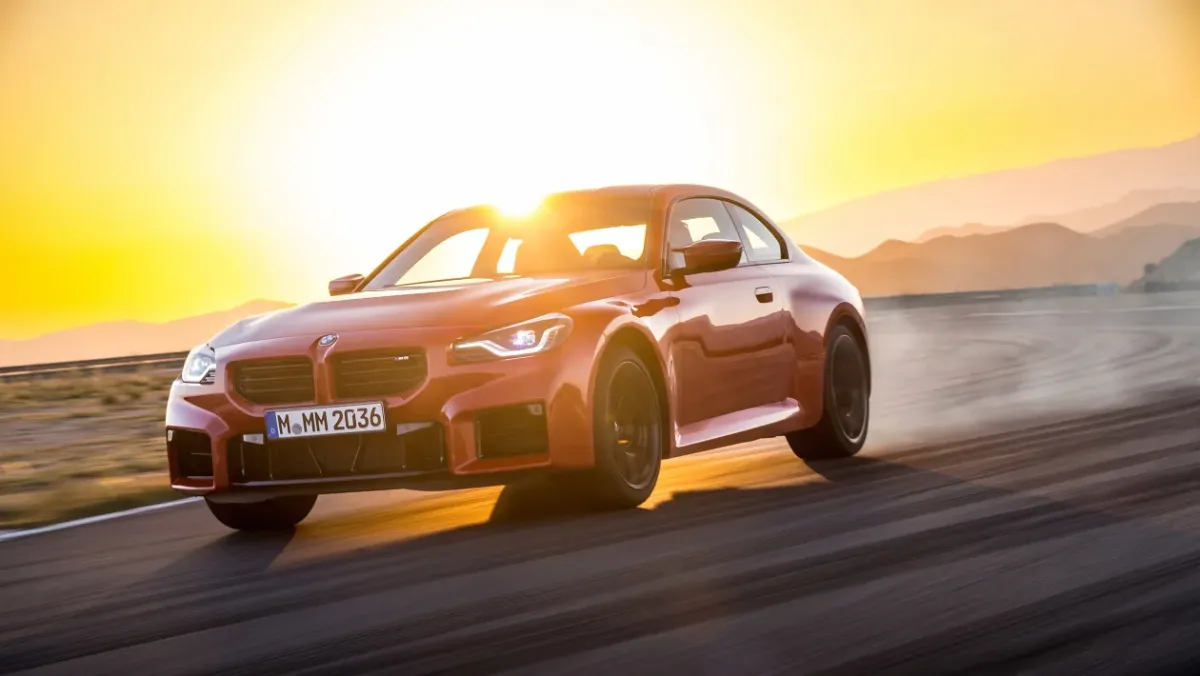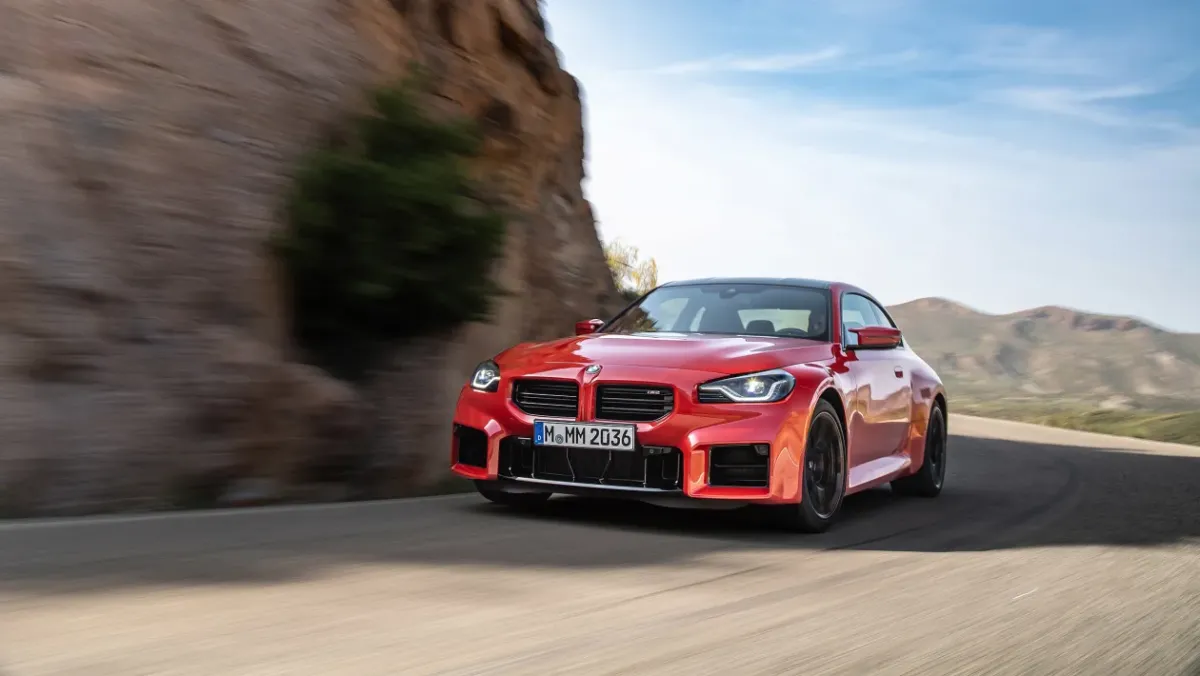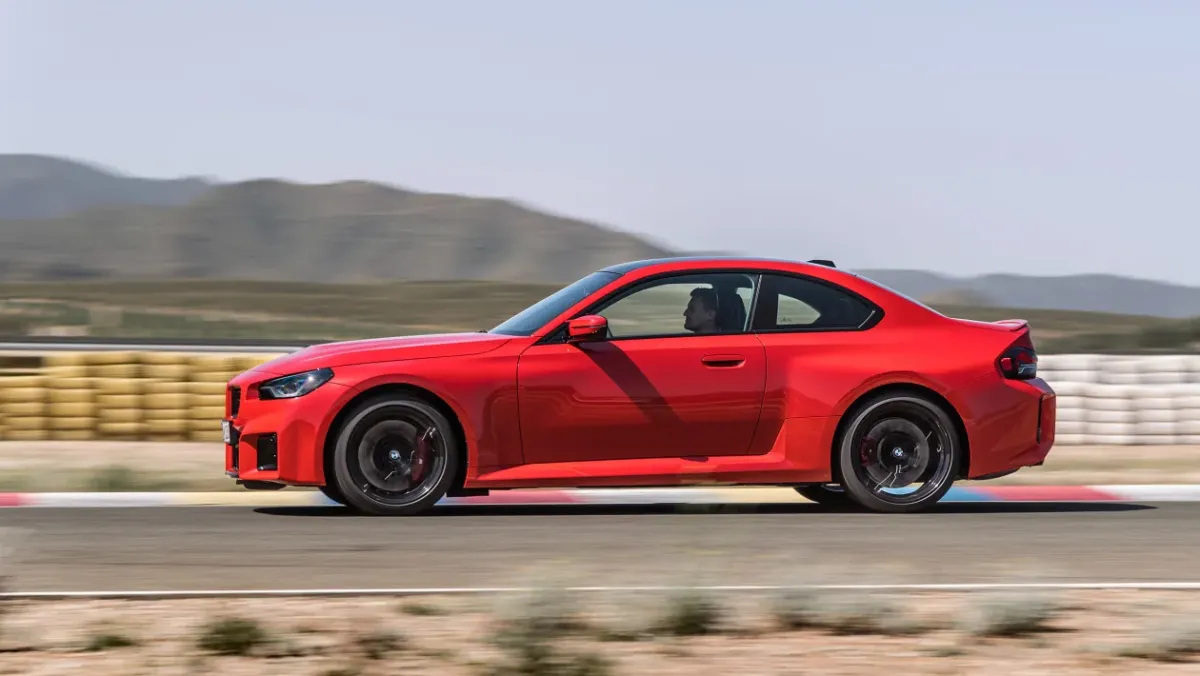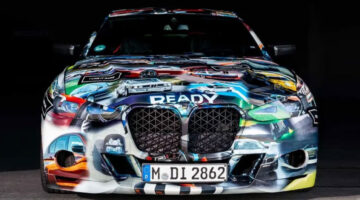The new M2 promises to channel BMW’s nostalgic best with aggressive new hardware
The wait for the new BMW M2 is finally over. Coming within a flurry of new M models as part of the division’s 50th year celebrations, the new M2’s compact two-door saloon package is a pleasing palette cleanser after 2.7-ton plug-in hybrid SUVs and limited-run $144,000 coupes.
Yet the new G87-designation M2 is more than just an entry-level M car, it’s a package that promises to combine BMW M’s full-strength hardware with a simpler and more engaging ethos. Priced from $68,045 when it arrives in the region next year, it’s on-par with AMG’s A45 S and around $9k more than an Audi RS3 Saloon, but undercuts an M4 Competition by $19,895, giving a different class of buyer access to its high-end hardware.
You might also note that the word Competition hasn’t been mentioned, and that’s because the new M2 won’t be available in that form, not for now anyway. Nor will it come with an all-wheel-drive option, and while an automatic transmission is standard (the market still speaks, after all).

Powertrain and performance figures
The M2 is powered by the same S58 turbocharged 3-litre straight-six petrol engine as the M3 and M4. The unit is identical in most hardware aspects, featuring the same all-aluminium closed-deck block, intricate headers with 3D-printed internals and forged crankshaft. There’s BMW’s usual Valvetronic and Double VANOS valve and camshaft timing, plus an M-specific oil sump that has two separate chambers to ensure the engine remains lubricated even under sustained lateral G.
It’s also fitted with the same twin-turbocharger layout with an indirect intercooler and electronically controlled wastegate, but the turbos run at lower boost pressures than on the more highly strung M3/4 Competition. The net result is a power figure of 453bhp, 50bhp less than the M3/4, but a generous 49bhp more than the previous M2 Comp. The torque peak of 406lb ft is actually the same as the previous M2, but is produced over a wider spread of the rev band, plateauing between 2650rpm and 6250rpm.
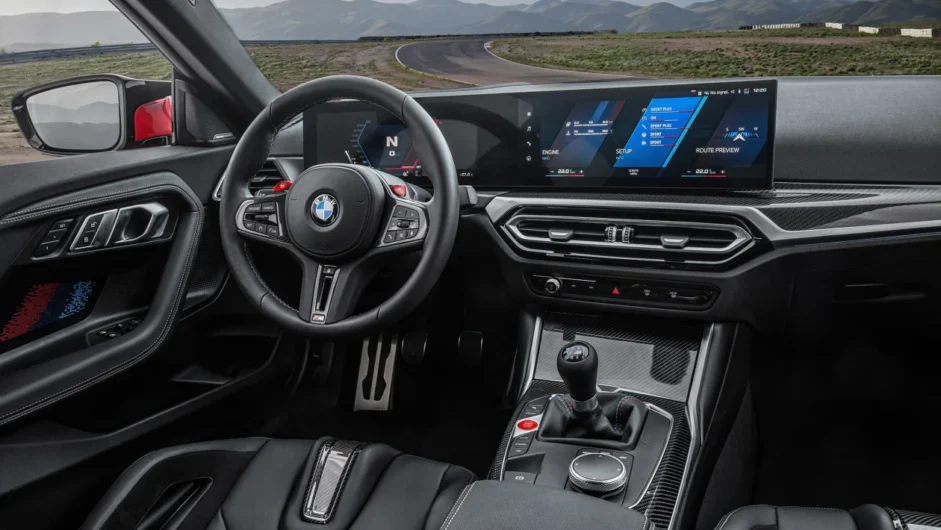
Power is then sent to one of two aforementioned transmission options – an eight-speed automatic, or a no-cost-option six-speed manual. Zero to 100kph is dealt with in 4.3sec with the manual, but the eight-speed auto drops that time to 4.1sec – 0.2sec behind an M4 Competition and 0.1sec ahead of the previous M2 Competition with DCT. The auto comes with a new gear selector and paddleshifters mounted to the back of the steering wheel, and an ability to drop to the lowest possible gear with a long pull of the left-hand paddle. It will also never automatically shift up, even if you accidentally head-butt the 7250rpm limiter.
The automatic’s shorter gear ratios and faster shifts benefit the performance figures up to 200kph even more, allowing it to reach that milestone at 13.5sec – 0.8sec ahead of the manual’s 14.3sec. Top speed with both transmission options is limited at 250kph as standard, or 280kph with the M Driver’s Package.
Power is sent exclusively to the rear wheels via an electronically controlled limited-slip differential on both transmissions, which works in conjunction with the DSC system to adapt its locking mechanism to the conditions.

Body and chassis
The M2 features a totally bespoke body compared to the standard 2-series coupe, only sharing its bonnet, door skins and bootlid. The blocky, pumped-up wheelarches do little to disguise the 48mm increase in width compared to a standard 2, something that’s only exaggerated by the staggered 18- and 19-inch wheel and tyre package. These are borrowed from the M3 Competition, and include 275-section front and 285-section rear Michelin Pilot Sport 4 S rubber. Overall, the G87 M2 is substantially bigger than the previous M2, being 114mm longer, with an extra 54mm in the wheelbase, and 16mm wider, but 11mm lower.
The M2’s suspension is also derived from the contemporary M3 and M4, so its front spring struts are interconnected and mounted rigidly to the nose and bulkhead with a huge aluminium over-engine strut brace and under-engine shear plate. The double-joint front suspension arms, wheel carriers, bearings and spring strut clamp are all made of aluminium, and pair with a five-link rear suspension design that sits in a solidly mounted rear subframe.

All M2s come with electronically adjustable dampers as standard, and the steering has a variable ratio depending on speed, and variable weighting too. BMW hasn’t skimped on the brakes either, combining a six-piston front and sliding-caliper rear setup with 380mm discs at the front and 370mm discs at the rear. It also features BMW’s integrated braking system, which gives the driver an option of two pedal-feel settings.
The trade-off for all this high-spec hardware is weight, of which the M2 has more than is ideal. BMW is quoting 1700kg for the manual, with a 25kg weight penalty for the automatic that puts it a substantial 237kg heavier than the previous M2 Competition. It also makes exactly the same weight as the current M4 Competition when fitted with the automatic transmission. A huge 54kg of that can be removed with the optional M Carbon bucket seats, but this then also applies to the M4 – swings and roundabouts.
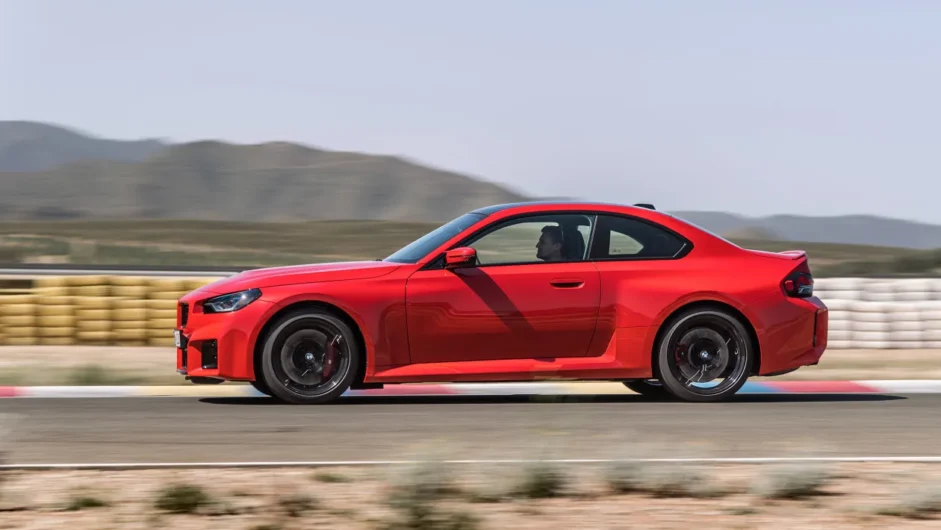
Design and interior
Like so many other BMW products these days, the M2 has created plenty of conversation in regards to its design, but there’s lots to like on this new generation. There’s none of the M3 or M4’s coffin-like grilles, instead there’s a blocky aggression to the nose, sills and tail. The headlights now sit in a newly shaped opening that completely changes the face compared to a standard 2-series.
It is accentuated by the square-shaped grilles, which also creating a unique frame for the BMW roundel that’s mounted between them. The widened sills, undercut rear bumper and upright reflectors make the M2 distinctive from all angles, and in the flesh it looks much more resolved than it can look in pictures.
Inside, the M2 gains a fresh dashboard that incorporates BMW’s floating dual-screen interface and slimmed dash. Standard 2-series models have also (quietly) picked up this new interior, which includes BMW M’s latest driver mode displays and interfaces. The interior is less opulent than the M3 and M4’s, with none of the eccentric colour options or high-end leather finishes found on those cars. The optional carbon-backed seats are available, though, in a unique black leather finish with highlights in M’s signature blue, violet and red colours.

Specs
| Engine | 2993cc in-line six, twin-turbocharged |
| Gearbox | six-speed manual (eight-speed auto) |
| Power | 453bhp |
| Torque | 406lb ft @ 2650-6250rpm |
| Weight | 1700kg (1725kg) |
| Power-to-weight | 266bhp/ton (262bhp/ton) |
| 0-100kph | 4.3sec (4.1sec) |
| Top speed | 250kph (280kph with M Driver’s Package) |
| Price (local) | $68,045 |
This article originally appeared at evo.co.uk
Copyright © evo UK, Autovia Publishing






